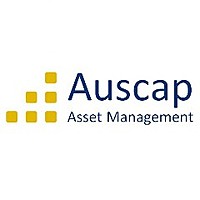Dealing with imperfect information
Since perfect knowledge is not attainable, we believe that trying to achieve it is futile and potentially dangerous. Often those who are closest to a company are the ones most in danger of mispricing single or multi-factor risk. Being aware of risk does not guarantee that an investor will price it accurately. In fact, if an investor has overconfidence in his or her ability to determine the probability of a given risk, it seems more likely that this risk will get mispriced (or more frequently, just ignored altogether).
For example, overconfidence that regulatory risk is low for a company dependent on the government for the majority of its revenues can lead to a mispricing of this risk or even to one ignoring the risk altogether in determining an appropriate valuation for the business. Assuming a pharmaceutical company will get regulatory approval to commercialise a drug because of intricate knowledge and understanding of the results of the company’s clinical trials might lead to one ignoring alternative non-clinical risks associated with the regulatory approval process. Similarly, knowledge and understanding of the grades and purity of a minerals deposit might lead to an overestimation of the value of an in-ground resource given the importance of many other factors in determining whether such a deposit will be a viable mining operation. In such instances having superior knowledge of a situation can actually lead to making poorer investment decisions.
We believe that successful investing requires decision making in situations where you might have reasonable knowledge of all of the major pieces of information that constitute the valuation equation. The critical piece of the puzzle might actually be the ability to maintain perspective, identify key risks and make sensible decisions in the absence of perfect information.
History suggests that successful investors have a very clear framework to guide their decision making. The framework in many instances is more important than the ability to derive a valuation or attain the most knowledge in relation to a particular company. An important part of the framework is an understanding that an individual investor will never have sufficient information to make a perfect assessment of a company. This knowledge is important for both reducing overconfidence that might otherwise encourage overinvesting in a given opportunity and maintaining awareness of any new facts affecting a given company. The framework aims to mitigate risk. It limits the investment opportunities an investor will consider. For instance, understanding his “circle of competence” enables Warren Buffett to state that most of the time Charlie and he can tell you whether they are interested in buying your company in a very short period of time.
“We can promise complete confidentiality and a very fast answer – customarily within five minutes – as to whether we’re interested (in Berkshire buying your business).”
Warren Buffett, Berkshire Annual Letter to Shareholders 2014
We are also of the view that an investor’s framework develops over time, typically with a gradual narrowing of the types of investments one would consider. It reminds us of the investing adage, “you can’t buy experience”. Our investment framework serves to try to limit the risk of permanent loss of capital. We have discussed a few features of this framework in past newsletters, including:
- Investing in companies where we are familiar with the products and/or services that are being sold. We prefer not to invest in companies where we are at a natural disadvantage to other investors analysing the same information because we do not have specialist knowledge in a particular field, so tend to shy away from areas that require such knowledge.
- Investing in businesses that can be valued based on current and historic cash flows. We highly value the ability to analyse a company’s track record in terms of return on invested capital (ROIC), cash flow generation and earnings volatility. This typically means we are investing more heavily in companies within the ASX200, businesses that have been operating as listed companies for some time, than those outside of it. (Risk & Reward: The Case For Size and Liquidity - September 2013)
- Investing in businesses where the assumptions around future growth in earnings are modest, because the market tends to overestimate the likelihood of success for fast-growing companies. Increasing the number of assumptions we need to make about future growth increases the number of ways we can be wrong. As value investors we prefer a bird in the hand to two in the bush. (Avoiding The Double Whammy: Why We Prefer Value To Growth – June 2014)
- Avoiding investments in businesses where there is a non-zero possibility that the value of the business will be significantly and permanently impacted by a one-off, albeit unlikely, event that causes a permanent loss of capital.
- Investing in companies where there is, most frequently, no material information arbitrage between the buyer and the seller. As a result we infrequently participate in Initial Public Offerings (IPOs) where the seller has substantial knowledge and is satisfied with the sale price, and the buyer typically has limited, and we would suggest often insufficient, knowledge to accurately value the business. (Asymmetric Information & IPOs – February 2014)
From our perspective, investing within a defined framework is an essential risk management practice. Finding your own circle of competence, or a manager that invests in a manner that you are comfortable with, is as important as analysing the track record of a company or investment manager to determine if they are a suitable custodian for the assets you are investing into equities. At Auscap our framework is constantly being refined, reassessed and narrowed with the aim of both avoiding a repeat of mistakes that we have made in the past and learning from the mistakes of successful investors that have gone before us.
1 topic

